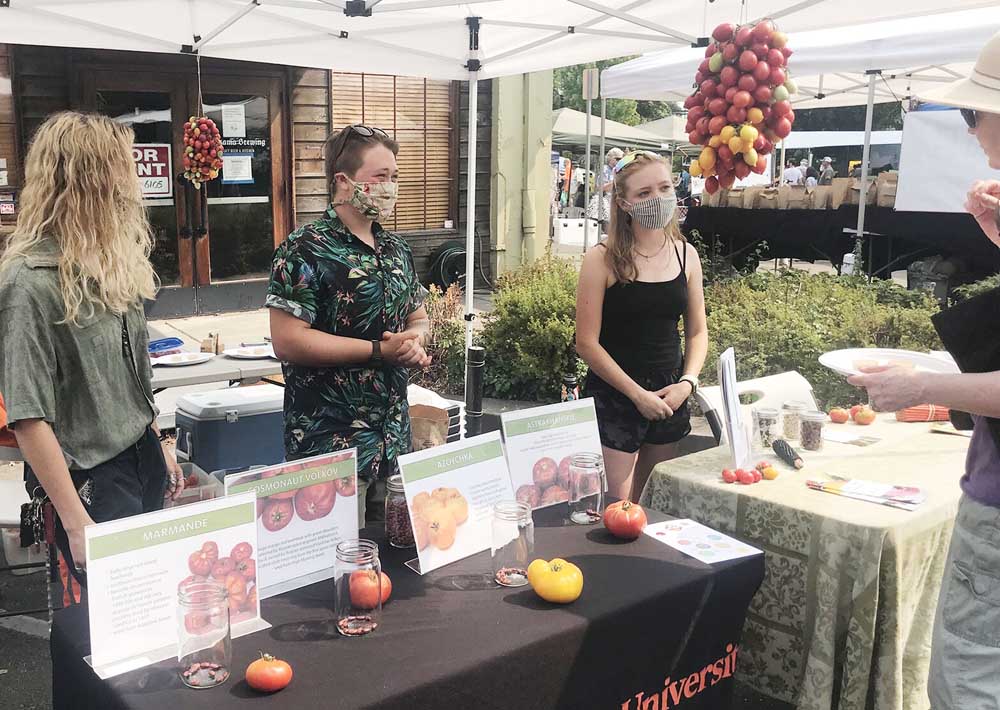Research explores dry farming possibilities
Published 2:00 pm Wednesday, October 13, 2021

- Oregon State University Dry Farming Project student research assistants Kelly Andrus, Asher Whitney and Meaghan Herlihy host a dry-farmed tomato tasting at the Corvallis Farmers Market.
SALEM — Northwest farmers and researchers are exploring how to expand the use of “dry farming.”
Dry farming is a low-input approach to farming. Some farmers draw a distinction between “dry farming” and “dryland farming,” while others use the terms interchangeably. Those participating in the research use the definition of “irrigated once or not at all.”
Dry farming was more prevalent before farmers turned to irrigation, said Amy Garrett, president of the Dry Farming Institute and Oregon State University Extension small farms programs instructor. She’s met longtime dry farmers raising crops that researchers weren’t aware could be grown without irrigation.
Crops include winter squash, tomatoes, dry beans, orchards, zucchini, melons, carrots and corn.
“As soon as you say, ‘These are the only crops you can dry farm,’ there’s always going to be somebody innovating…,” Garrett said.
More than 50 farmers are participating in research efforts involving crops ranging from vegetables to wheat.
Most of them are using small parcels, some as small as 1,000 square feet, Garrett said.
Water availability in the soil is the most important factor, said Alex Stone, OSU vegetable specialist. The more water-holding capacity in the soil, the more likely it is to produce a higher yield, she said.
Some dry-farmed tomato yields on some sites in Oregon were comparable to irrigated yields in California, Stone said.
“You don’t have the irrigation expense and you can have lower weeding costs,” she said.
Researchers are also analyzing profitability. Yields are lower, so the cost of dry-farmed produce tends to be higher, according to the Dry Farming Institute.
One goal is to entice customers to pay more for dry-farmed products than for irrigated products, said Emily Dick, project manager at the Washington Water Trust, a nonprofit dedicated to improving and protecting stream flow and water quality.
A pilot project involving 11 farmers developed a label for dry-farmed produce.
Benefits of dry farming for farmers can include lower weeding costs by 50% and lower input costs.
For consumers, benefits can include enhanced flavor and better storability, Garrett said.
The researchers have conducted taste tests comparing dry-farmed tomatoes, melons and berries to their irrigated counterparts.
About $1 million has been devoted to research so far.
The researchers hope to find more funding for research, said Lucas Nebert, an OSU post-doctoral student. He hopes to start mapping sites where dry farming is likely to be successful.
Garrett thinks more recognition in the marketplace will lead to more demand.
“This year, especially with temperature extremes, water issues and the backdrop of the fires, people are thinking about how to adapt,” she said. “It’s not the solution (by itself), but it can be part of an adaptive strategy.”



